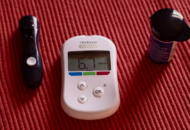In the intricate tapestry of diabetes management, finding the right prescription for blood sugar control is a crucial piece of the puzzle. With a myriad of options available, navigating the realm of medication management requires a thoughtful and informed approach. This article aims to shed light on the landscape of prescription choices, empowering individuals on their journey to optimal blood sugar control.
Understanding the Diversity of Medications
The array of medications designed to regulate blood sugar levels reflects the diversity of diabetes itself. From insulin to oral medications, each option carries its own set of benefits and considerations. Semaglutide Pens from Canada offers a notable addition to this diverse array, exemplifying the evolving landscape of diabetes management. Semaglutide, available in convenient pen formulations, belongs to the GLP-1 receptor agonist class and shares the dual benefits of blood sugar control and weight management. This injectable medication mimics the action of the GLP-1 hormone, fostering insulin secretion and hindering glucagon release.
Insulin: The Cornerstone of Blood Sugar Control
For many individuals with diabetes, insulin remains a cornerstone in blood sugar control. Whether delivered through injections or insulin pumps, this hormone plays a pivotal role in managing glucose levels. Modern insulin options offer various formulations, allowing for more precise and individualized treatment plans that cater to the specific needs and lifestyles of those managing diabetes.
GLP-1 Receptor Agonists: A Holistic Approach

GLP-1 receptor agonists, such as Ozempic, are gaining prominence for their dual benefits in blood sugar control and weight management. These medications mimic the action of the GLP-1 hormone, promoting insulin secretion and suppressing glucagon release. Beyond blood sugar regulation, GLP-1 receptor agonists contribute to weight loss, presenting a comprehensive approach to diabetes management.
SGLT2 Inhibitors: Managing Blood Sugar and Cardiovascular Health
SGLT2 inhibitors represent another class of medications that not only regulate blood sugar but also exhibit cardiovascular benefits. These medications work by reducing glucose reabsorption in the kidneys, leading to increased glucose excretion through urine. The additional cardiovascular advantages make SGLT2 inhibitors a valuable option for those with diabetes and underlying heart concerns.
Oral Medications: Pill-Based Solutions

Oral medications provide a convenient alternative for those opposed to injections. These medications often work by enhancing insulin sensitivity, reducing glucose production in the liver, or aiding in better insulin utilization. The availability of different classes of oral medications allows healthcare providers to tailor prescriptions based on factors such as the type of diabetes, overall health, and potential side effects.
Individualized Treatment Plans: A Collaborative Approach
The effectiveness of medication management lies in the individualization of treatment plans. Healthcare providers play a pivotal role in crafting prescriptions that align with a person’s health profile, lifestyle, and preferences. Collaborative discussions about medication options, potential side effects, and long-term goals ensure that the chosen regimen is not only effective but also well-suited to an individual’s unique circumstances.
In the ever-evolving landscape of medication management for blood sugar control, individuals have a spectrum of options to explore. From insulin to oral medications and innovative options like GLP-1 receptor agonists and SGLT2 inhibitors, the choices are vast. Through collaborative discussions with healthcare providers, a personalized and empowering approach to medication management can be forged. The journey to optimal blood sugar control is not a one-size-fits-all endeavor; rather, it’s a dynamic and personalized path that reflects the diversity of individuals managing diabetes.…



 Having healthy hair starts from within. Eating a balanced
Having healthy hair starts from within. Eating a balanced  Deep conditioning your hair is a great way to keep it hydrated and healthy. We recommend deep conditioning once a week, but you can do it more or less, depending on your individual needs. Use a good quality conditioner and leave it in for at least 30 minutes. You can also deep condition your hair overnight for even better results.
Deep conditioning your hair is a great way to keep it hydrated and healthy. We recommend deep conditioning once a week, but you can do it more or less, depending on your individual needs. Use a good quality conditioner and leave it in for at least 30 minutes. You can also deep condition your hair overnight for even better results.
 When a person is sick, stressed or injured, the energy in his or her body can become stagnant or unbalanced.
When a person is sick, stressed or injured, the energy in his or her body can become stagnant or unbalanced. Many people who have used massage chairs recommend them as very useful tools for treating illness, relieving pain, and for relaxation. Many studies have indeed proven their ability to assist in the healing process. They are excellent for enhancing blood circulation, muscle relaxation, reducing stress and for rehabilitation purpose.
Many people who have used massage chairs recommend them as very useful tools for treating illness, relieving pain, and for relaxation. Many studies have indeed proven their ability to assist in the healing process. They are excellent for enhancing blood circulation, muscle relaxation, reducing stress and for rehabilitation purpose.
 What is the importance of taking nutritional supplements? Such pills play a vital role in maintaining health and fitness as they fill in the much-needed vitamins that we are not getting from the foods that we consume daily. Take note that failure to provide the body with the essential nutrients can lead to a lot of diseases. Therefore, it is highly recommended that you take advantage of multivitamins.
What is the importance of taking nutritional supplements? Such pills play a vital role in maintaining health and fitness as they fill in the much-needed vitamins that we are not getting from the foods that we consume daily. Take note that failure to provide the body with the essential nutrients can lead to a lot of diseases. Therefore, it is highly recommended that you take advantage of multivitamins. If you go online and visit websites like nationalnutrition.ca, you will see a list of authentic and effective products that you can use depending on what you need. Again, it is important that you determine what your body requires first before buying any type of supplement.…
If you go online and visit websites like nationalnutrition.ca, you will see a list of authentic and effective products that you can use depending on what you need. Again, it is important that you determine what your body requires first before buying any type of supplement.…